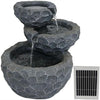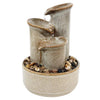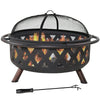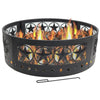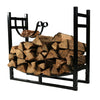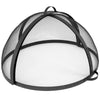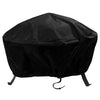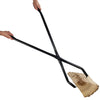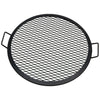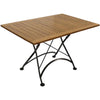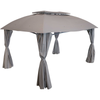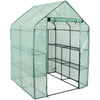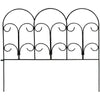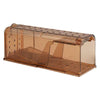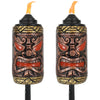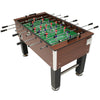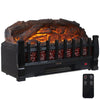During the long, cold months of winter, many of us daydream about relaxing in a hammock on a warm tropical beach. Even though balmy shores may be out of reach for most of us, you don’t need to stash your hammock away when the winds turn cold. Hammocks are a relaxing addition to the backyard, but they can also be used indoors as a stylish furniture addition or even as a replacement for a traditional bed (for more information about that, check out our blog article, 5 Reasons to Use a Hammock as a Bed). This article will show you how you can bring a cozy hammock indoors.
Before You Start

Under the right circumstances, a hammock can be added to almost any room in your home, but there are a few aspects you must consider before you hang your hammock. When mounting a hammock to a wall or ceiling, you must first ensure that your homes uses wood studs. Do NOT attempt to mount a hammock to metal studs as doing so can bend the stud and lead to structural damage. Additionally, do NOT try to mount the hammock to drywall alone as it will not be strong enough.
You must take the size of your hammock into consideration as well as the two points it will hang from. Make sure you have the space in the room for the width of the hammock so it will comfortably hang between the two points.
In addition to space, you should also consider how you plan on using your hammock. Your hammock will take up a decent amount of space so you should consider the other furniture that you will have in the room. You should also take the features of the room into consideration before choosing a place to hang the hammock. You will want to avoid hanging your hammock too close to a door or window so you can still access them.
The most important thing to consider is safety. Once you have determined the space that you will need for your hammock, you must find a place where it is safe to hang it. If you are planning on using mounting hardware, use quality hardware that is capable of supporting at least 300 lbs.
Hanging Options
Hammock Stand
If you don’t want to deal with the trouble of studs and hardware, a hammock stand or hammock chair stand is a convenient option for any room. These stands create the perfect place to hang a hammock or hammock chair and can be easily moved from place to place as necessary. Plus, this option is a great option for anyone living in a rental property where you’re not able to use hardware in your walls.
Wall to Wall

Another hanging option is from wall to wall. This produces a similar result as using two trees or posts with an outdoor hammock If you choose this method, look for two hanging points that will allow a comfortable curve in the hammock while still holding the hammock taut enough to lie in. Typically, a hammock will have a 30-degree hang when you find the right distance between the two points. You should also make sure your hammock is hung at the correct height so you can easily get in and out of the hammock. On average, this height is between 5.5 to 6 feet off the floor.
When installing the hanging hardware for the hammock, make sure you have a stud in the proper place. NEVER install the hardware directly into the drywall. This will not be sturdy enough to support the weight of a person.
From the Ceiling
Similar to the wall to wall option, you can also hang a hammock from the ceiling by installing hardware into the ceiling joists. This method uses the same process as wall to wall hanging, but it does offer less freedom on how the hammock hangs. With the wall to wall method adjusting the slack can alter the sag and tautness of the hammock. With the ceiling option, adjusting this will only move the height of the hammock up or down. Typically, the distance between ceiling attachment points is between 10 and 15 feet apart. This option is a popular and simple method for hanging hammock chairs.
How to Hang the Hammock
Step 1: Find Your Studs
Use a stud finder to find two studs in the location desired in order to achieve the right hammock curve and mark these spots.
Step 2: Drill Pilot Holes
Once you’ve chosen the locations, drill a pilot hole into the center of each stud. Then, screw in the hanging hardware. Eye bolts are a very popular option for hanging hammocks indoors, but you can also use screw eyes, J-hooks, and S-hooks.
Step 3: Hang the Chains or Ropes
Chains or sturdy ropes can be used to suspend the hammock from the hardware. Hang these from the hardware and pull on them firmly to ensure that they are secure. Attach the hanging ropes or chains to the hammock and if they are hung from a wall adjust the slack until the right angle is acquired.
Step 4: Test the Hammock
After you’ve hung the hammock, try testing the weight capacity by filling the hammock with books or weights to make sure the hammock is sturdy enough to support weight.
Step 5: Add Pillows and Blankets
Once you have successfully put up your hammock, add pillows, blankets, and hammock pads to the hammock to make it more comfortable and add a touch of color to match your room’s decor. Now you can kick back and relax your cares away.
For more information about how to safely get in and out of a hammock, check out the blog, How to Get In and Out of A Hammock without Flipping or Falling.
Whether you use them indoors or outdoors, hammocks are a wonderful place to relax. Even when the season is over, you can still enjoy the benefits of a hammock in the comfort of your own home.
To learn more about how to hang hammocks, check out the Bright Ideas blog article, How to Hang a Hammock in 3 Simple Steps.

